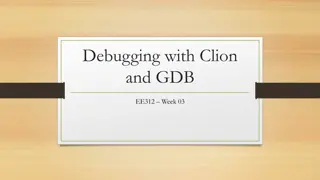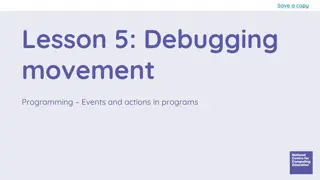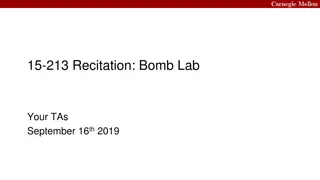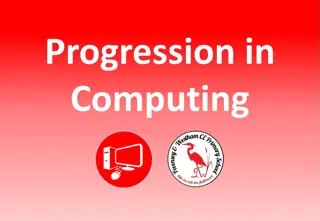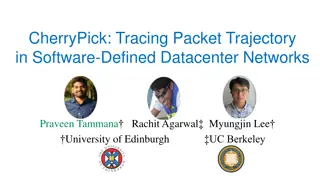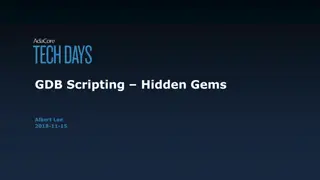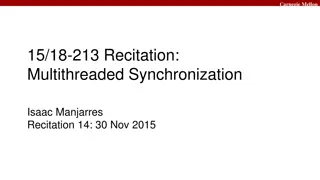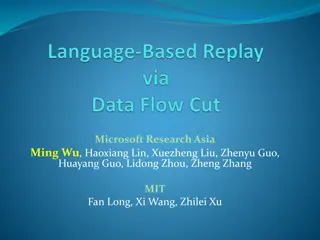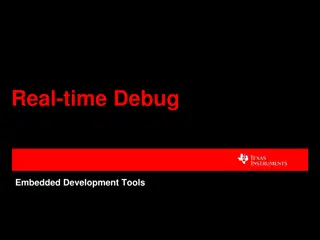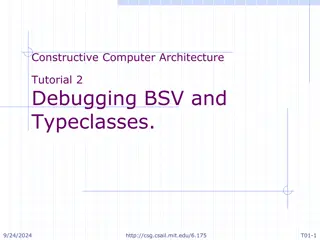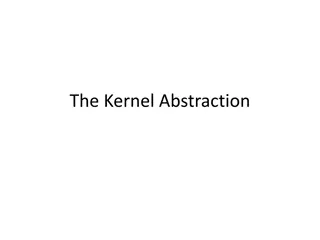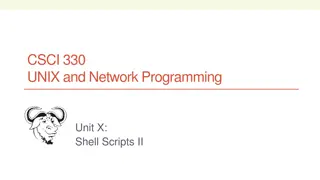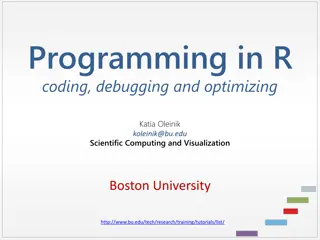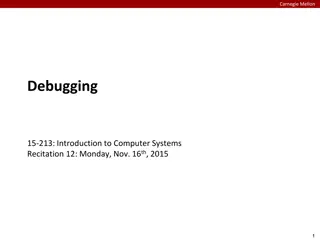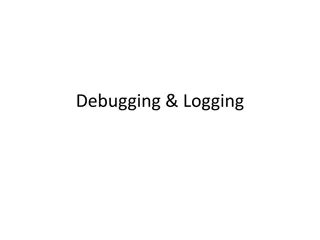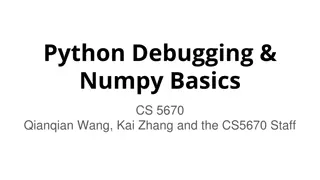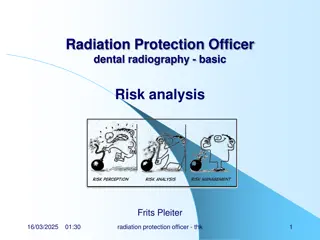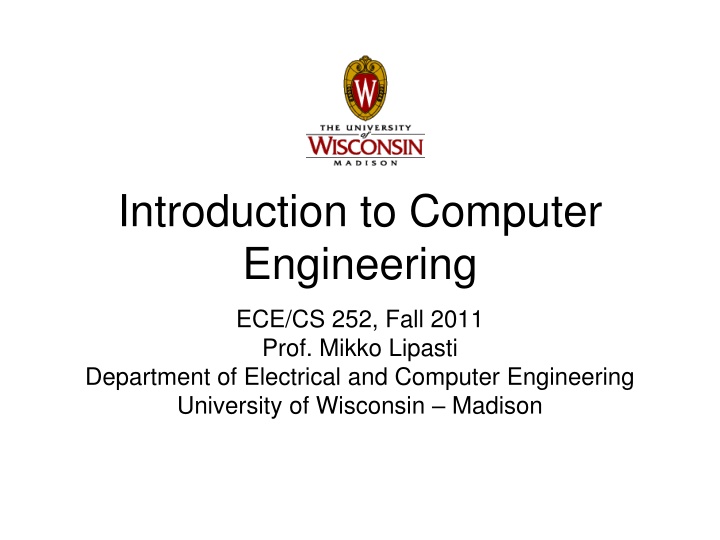
Introduction to Arcpy Debugging Using Arcpy
Application programming using Python as an extension language involves accessing running code in software applications such as ESRI through the arcpy library. With various modules like arcpy.da, arcpy.mapping, arcpy.mpmodule, arcpy.sa, and arcpy.na, it provides functionalities for GUI element support, geoprocessing, data access, mapping, spatial analysis, and network analysis. Python versions 2.7 and 3.x are used in different ESRI environments, and transitioning between them involves minor changes. Avoiding deprecated practices in Python 2.7 is important for maintaining compatibility with newer versions.
Download Presentation

Please find below an Image/Link to download the presentation.
The content on the website is provided AS IS for your information and personal use only. It may not be sold, licensed, or shared on other websites without obtaining consent from the author. If you encounter any issues during the download, it is possible that the publisher has removed the file from their server.
You are allowed to download the files provided on this website for personal or commercial use, subject to the condition that they are used lawfully. All files are the property of their respective owners.
The content on the website is provided AS IS for your information and personal use only. It may not be sold, licensed, or shared on other websites without obtaining consent from the author.
E N D
Presentation Transcript
Introduction to Computer Engineering ECE/CS 252, Fall 2011 Prof. Mikko Lipasti Department of Electrical and Computer Engineering University of Wisconsin Madison
What is a Computer?
Computers! Engineers and scientists of all disciplines rely on computers for many aspects of their work Not just word processing, spreadsheets, CAD, etc. Computational methods, data mining, analysis/synthesis are fundamental to advances in many fields Many of the advanced techniques used in today s microprocessors were invented right here at UW Some of the most renowned computer design researchers in the world are on our faculty There is a near-100% likelihood that a Wisconsin graduate helped design the computer or processor that you own
1987 vs. 2010 System Year Cost Form factor CPU Memory Storage Display Peripherals Connectivity IBM PC/AT 1987 $2000 desktop 12 MHz 80286 512KB 20MB hard disk, 1.2MB floppy 80x25 monochrome text Keyboard 1200 baud dialup modem Motorola Droid X 2010 $199 (w/contract) Pocket 1GHz TI OMAP 512MB 8+ GB 480x854 pixel color Camera, phone, web 3G, WiFi
$10 base; 60% growth Year 0 3 16 21 36 Salary $10 $40 $18K $193K $223M Comments Base Still live at home Buy car Buy median house in Madison Need fundamentally new ways to spend money Replace US Federal Government 51 $2.5T
Performance Growth Unmatched by any other industry ! [John Crawford, Intel] Doubling every 18 months (1982-1996): 800x Cars travel at 44,000 mph and get 16,000 mpg Air travel: LA to NY in 22 seconds (MACH 800) Wheat yield: 80,000 bushels per acre Doubling every 24 months (1971-1996): 9,000x Cars travel at 600,000 mph, get 150,000 mpg Air travel: LA to NY in 2 seconds (MACH 9,000) Wheat yield: 900,000 bushels per acre
This Course This course will: Help you understand the significance and pervasiveness of computers in today s society and economy Teach you how computers really operate and how they are designed Introduce you to concepts that students in the Computer Engineering and Computer Science degree programs learn in depth over four years Prepare and motivate you for study in these degree programs (CMPE, EE, CS) Counts towards GCR introduction to engineering requirement
Course Outline Prerequisite none Major topics in course Introduction to computers and computing Information representation and manipulation Logic elements and combinational Logic Sequential Logic and Memory Simple computer organization, design and operation Machine language and instruction set architecture Assembly language Programming constructs
Typical Weekly Structure Monday lecture Ani Sci 212 Prepare by reading text beforehand On your own Watch online lecture + examples Wed discussion Individual & team quiz Review Fri discussion Quiz or applied homework Review, homework help
Web Page & Syllabus http://ece252.ece.wisc.edu Instructor & TAs Textbook Lecture Notes Discussion sections Schedule LC-3 Simulator Grading Exams Homework
Reminders/Advice Textbook read BEFORE corresponding lecture Online lectures view before discussion Quizzes will assume that you have Homework completed in groups (not hw1) Will reinforce in-class coverage Will help you prepare for midterm exams Study Groups of ~4 Assigned in your discussion section Should meet weekly outside of discussion Review material, complete homework assignments
Technology Technology advances at astounding rate 19th century: attempts to build mechanical computers Early 20th century: mechanical counting systems (cash registers, etc.) Mid 20th century: vacuum tubes as switches Since: transistors, integrated circuits 1965: Moore s law [Gordon Moore] Predicted doubling of capacity every 18 months Has held and will continue to hold Drives functionality, performance, cost Exponential improvement for 40 years
Some History Date Event 1947 1st transistor 1958 1st IC Comments Bell Labs Jack Kilby (MSEE 50) @TI Winner of 2000 Nobel prize Intel (calculator market) 2300 transistors 29K transistors 1M transistors 5.5M transistors 1.7B transistors 50B transistors 1971 1st microprocessor 1974 Intel 4004 1978 Intel 8086 1989 Intel 80486 1995 Intel Pentium Pro 2006 Intel Montecito 201x IBM
Applications Corollary to Moore s Law: Cost halves every two years Computers cost-effective for National security weapons design Enterprise computing banking Departmental computing computer-aided design Personal computer spreadsheets, email, web Smartphone camera, calendar, email, web, games Pervasive computing computers everywhere Countless industries revolutionized
Abstraction and Complexity Abstraction helps us manage complexity Complex interfaces Specify what to do Hide details of how Application Program CS302 Operating System Compiler CS536 CS537 Machine Language (ISA) ECE/CS354 Goal: Use abstractions yet still understand details Scope of this Computer Architecture ECE/CS552 Digital Design ECE/CS352 course Electronic circuits ECE340
Programmable Computers Many computers today are embedded Fixed functionality Appliance-like Not really programmable by end user Not the focus of this course! Instead, programmable computers Embedded/appliance computers still programmed! Learn to think of computer as a programmable device Program? Algorithm or set of steps that computer follows Human brains wired to work this way
Additional Information Resources for Special Help McBurney Center alternative testing or other arrangements Course problem consultation: Prof. Lipasti Broader problem consultation: advisor or counselor Academic Misconduct We really don t expect it to happen Please don t disappoint us Serious repercussions Academic record, dismissal from university Only hurting yourself and your future
Wrapping Up Readings Chapter 1: Welcome Aboard Homework 1 on the course web site Due Monday 9/12 in class (week after Labor day) Schedule for next few weeks Week Dates 1 Monday Labor Day Wednesday Ch 1 lecture AniSci 212 Ch 2 discussion EHxxxx Ch 2 discussion Friday Ch1 discussion EHxxxx Ch 2 discussion EHxxxx Exam I review EHxxxx Ch 3 discussion EHxxxx 9/5,9/7,9/9 2 9/12,9/14,9/16 Ch 2 lecture AniSci 212 3 9/19,9/21,9/23 Ch 2 lecture AniSci 212 4 9/26,9/28,9/30 Ch 3 lecture Midterm I AniSci 212 AniSci 212

